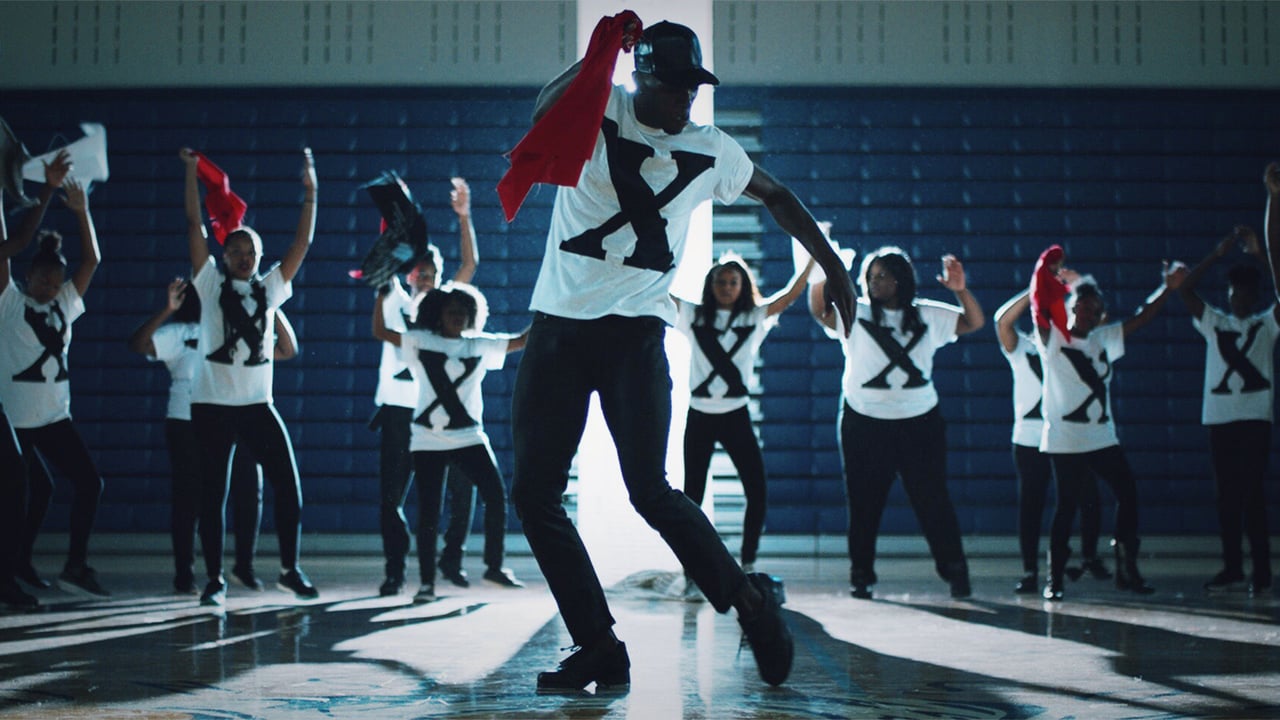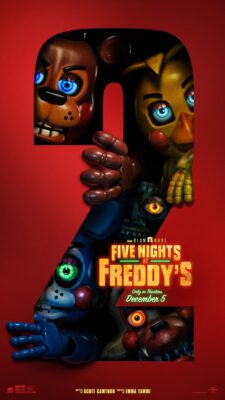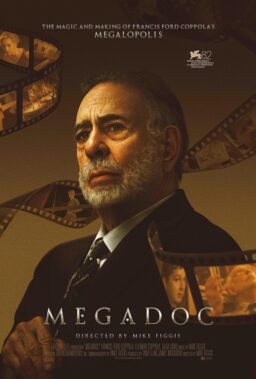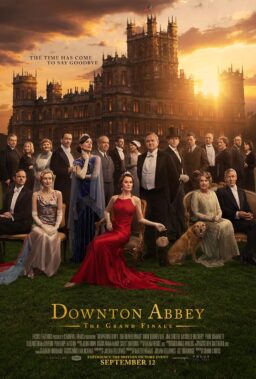“Hell You Talmbout” is a condensed version of the phrase “What the hell are you talking about?” In the case of the short film featured this month, the question pertains to Black Lives Matter and other movements of its kind. What is being talked about when someone says “black lives matter” or even “all lives matter” or “blue lives matter”? This dance-based, protest music video/documentary/spoken word hybrid gives voice to those who often have to do the explaining because of their experiences.
Directors Denzel Boyd, Tyler Rabinowitz and Joseph Webb have crafted a unique short film that I was fortunate enough to program at this year’s Chicago Critics Film Festival. As a dance film, it explodes with energy. As a protest video, it wisely eschews the obvious choice of using news footage or YouTube clips. As a spoken word piece, it memorializes those who lost their lives at the hands of police brutality while calling on all of America for the work that must be done to combat these tragedies in the future.
Much like what Spike Lee did almost 30 years ago with “Do the Right Thing,” “Hell you Talmbout” (on a smaller scale) delivers a powerful and potent message while commanding the viewers’ attention through an audio and visual language that invokes a purposely uncomfortable mix of joy and sorrow, anger and empathy. No matter how yow you want to classify the film, it definitely matters.
Q&A with Co-Director Tyler Rabinowitz
How did you come to the decision to film this performance?
After the killing of Philando Castile, I came across a viral Facebook Live video of the students of Northwest Tap Connection (a social justice oriented dance studio in Seattle) tap dancing in the street in protest. I sent it to my co-directors and we were profoundly moved by their passion, community and voice. In their dance, the taps of their toes are like the walks and talks of those chained and silence—but at the very same time, an embodiment of revelry and resilience. We reached out to founder Melba Ayco and choreographer/instructor Shakiah Danielson and said we hoped to turn this shaky iPhone video into a cinematic experience that amplifies these children’s voices and elevates the Northwest Tap Connection’s community. When watching this dance, we felt we were witnessing a piece of history, and we sought to preserve it.
Seeing how children are perceiving today’s injustices is required viewing. With a grant from the National YoungArts Foundation, we traveled across the country from NYC to Seattle and spent a day with Melba, Shakiah, and thirty brilliant young artists. What results is a visceral, raw, confrontational dance experience that captures the rage, passion, and community in the mind and hearts of children. Shakiah is quick to note that many of her students in the piece are the same age as Tamir Rice.
Were there any visual influences that informed the piece? Either with editing or cinematography?
Absolutely. I study dance film voraciously. In film school at NYU, my professor Rick Litvin had us read the transcript of a timeless speech by Elia Kazan at the end of his two week retrospective he presented at Wesleyan University. He spoke of the importance of studying dance and asserted it would help a director not only move actors but move a camera. The idea was that an appreciation for dance could guide you in directing dance not just in its literal form but more so in the way you set choreography on the emotions swirling around one another in a complex conflict. Here, I was inspired to capture the dance between the anger, passion, and resilience I saw in the eyes of these kids when I first saw the Facebook Live video. I drew inspiration from the long takes in old movie musicals that let the dance breathe, the kinetic energy in Hellzapoppin’ or anything starring the Nicholas Brothers. More modern influences include a short on Vimeo called Nzingha that I absolutely love. Our DP Oren Soffer showed it to me and the cold, documentary tones inspired our choices with light and camera.
But I must say, the greatest influence visually was our mastermind, co-director Denzel Boyd. He put together a phenomenal visual research portfolio for us that demonstrated the historical progression of protest symbolism, flag design, civil rights movement iconography, photos and videos of rituals and gestures that directly inspired moments in the film—such as the final shot of everyone in formation with their arms crossed and locked with one another. His process inspired us tremendously. He even gave the kids a history lesson on set, projector and all, to give them context to what we were doing and why.
As for the editing, I didn’t draw from anywhere specific. Influences can be subconscious and I drew on feeling and instinct. For me, this was about letting the children speak. I cut where and how I felt they needed me to so an audience could feel how they feel. I knew I wanted the redundancy of the dance to be felt because the repetition of the same story time and time again is exactly the issue being addressed. When will it stop? The dancers are asking the same question. Audiences often say it’s quite unlike anything they’ve seen before. They’re not sure how to categorize it – is it a music video, a dance film, a narrative, a documentary? I love this response because to me it is a melting pot. My end goal was for us to not only say their names, but see their names and feel their names.
With three directors, how did the collaboration work out? Who directed what?
This was the first film for Denzel or Joseph to have a directing role in, but they’re natural born artists with visions. We each offered a unique expertise: Denzel is a passionate designer and all of the prints and fashion you see in the film is created by him and so specifically inspired. Joseph brings a kinetic, illuminating knowledge and skill with tap dance, spoken word, and a perspective on the times we’re in that was so essential.
My role was to bring all of this out in each of them, in the dancers, and to bring it all together with my experience as a director and producer. Behind the monitor, instead of asking myself ‘is the scene working’ I was asking myself ‘are the voices of these children being felt?’ I think as a white person in a directorial role on this film it was essential to make that distinction. Directors today tend to claim an authorship that places them on a holy pedestal, but for me this was about putting another voice on the loudspeaker. It was about giving directions to the audience, to go and look out this window and see the outside world how the kids see it. This approach led me to build the piece accordingly.
For instance, when our original cut wasn’t working, I had Joseph write a letter addressed to the dancers and record it as a voice note on his phone and send it to me. That is the voice over you hear in the film. I also worked intensely with our DP Oren Soffer on directing the camera and ensuring that our intent as directors was fulfilled in the final cut. One moment that helped us tremendously was when we shifted gears on set to get coverage of every dancer in front of Denzel’s print of all of the names of lives lost. These portraits were so confrontational and ended up being the how we would start the film.

What has the response been like?
Beyond anything we could’ve ever hoped for. It has received standing ovations at multiple screenings, and when released online it went almost instantly viral on Facebook. Collectively across all platforms online I believe we’re at about 150k views and close to 3k shares. I read every comment, and some of the comments have been alarming as hell (someone said this was “the black KKK spewing hate under a different name.”). Those hurt my soul but reaffirm the need for this film to exist and this dance to be documented. Truthfully our festival screenings have been in spaces where the audience sees the world how we do, and they are champions of these kids. I’d be curious if we could make any progress if this were on screen in a part of the country where half the audience pulls up in the parking lot with a Blue Lives Matter bumper sticker on their car.
Our dream for the piece is to put it on display in a museum like the Smithsonian National Museum of African American History and Culture, in an exhibit featuring the film, Denzel’s banner (the centerpiece of the film), the flags he printed, and portraits we took of each dancer. Next to the portraits would be letters to America handwritten by them.
What’s next for you?
I’m co-writing what I hope will be my first feature film script. That’s the focus, but beyond that I am about to release a new music video I produced for Atlantic Records for a new pop artist I’m extremely excited about. I’m moving along the festival circuit with my new short “Alientologists,” a sci-fi about aliens discovering human music and dance for the first time when researching Earth. And, of course, I’m continuing to explore how I can use the camera as an extension of who I am as an ally, activist, and advocate and always seeking collaborative opportunities to bring stories and communities like Northwest Tap to the screen. We all should be! Learn more on what you can do here on the “Hell You Talmbout” website.
HELL YOU TALMBOUT from YoungArts on Vimeo.












